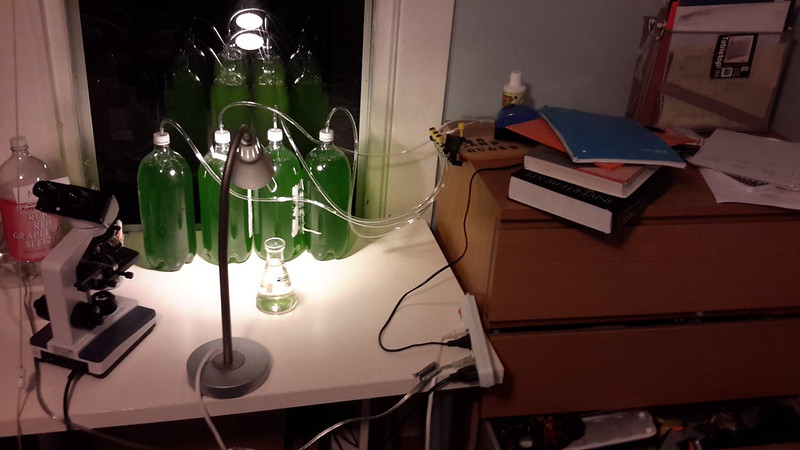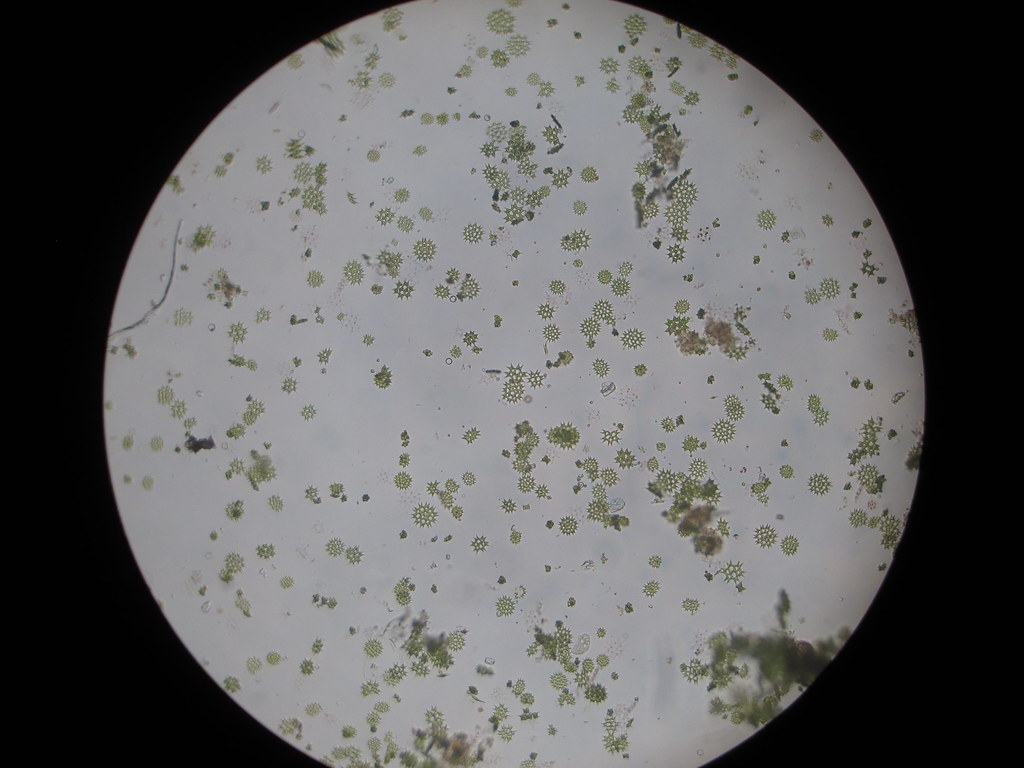If you want to culture algae, the first thing you should consider is what kind of algae you want, and how much you want to produce. If you want high yields in the shortest amount of time, it is best to buy pure algae cultures online. I used Florida aqua farms (
http://florida-aqua-farms.com) to start a pure chlorella culture and am very happy with the results. Otherwise, and in the case of my pediastrum culture, you can just fill a bottle with pond water and let the algae accumulate. For either method, I use 2 liter soda bottles as my culture vessels, and have one air pump that aerates my 4 culture bottles (with my current air pump, I'd say I could aerate up to 6 bottles at a time). Also, I keep the bottles next to a window facing northeast, and I have lamp on them until midnight when I go to sleep (it is best not to keep them in direct sunlight, but you also want 18+ hours of light exposure per day). If you start a culture with pond water, try to get as much algae as you can, but try to limit other things such as sediment and detritus from getting in. The culture will start very slowly, I think it took about three weeks for my starting culture to become dark green. Once your culture is sufficiently dense (dark green), you can split the culture into 2 bottles and fill them with water. From then on, the cultures should be dense and ready for splitting (or harvesting) every 8 days or so. The water you use should not contain chlorine, so treated tap water should be boiled or left out to sit for a day before use. Lastly, and I think this is important for optimizing growth, I add algae grow (
http://florida-aqua-farms.com/shop/micro-algae-grow) to the water to provide nutrients and vitamins. The problem with pond water as opposed to buying algae is that the algae is limited by predators such as rotifer and amoebas (but I like them so it doesn't bother me), making it less practical for mass production of algae. On that note, my pediastrum culture contains a lot of cool amoebas in very high concentration that I rarely get to see in samples, even from the pond they came from

. If you have any questions, feel free to ask

My current setup of 4 chlorella culture bottles

A view of the old pediastrum culture, notice the chunks of detritus present because I used pond water.



